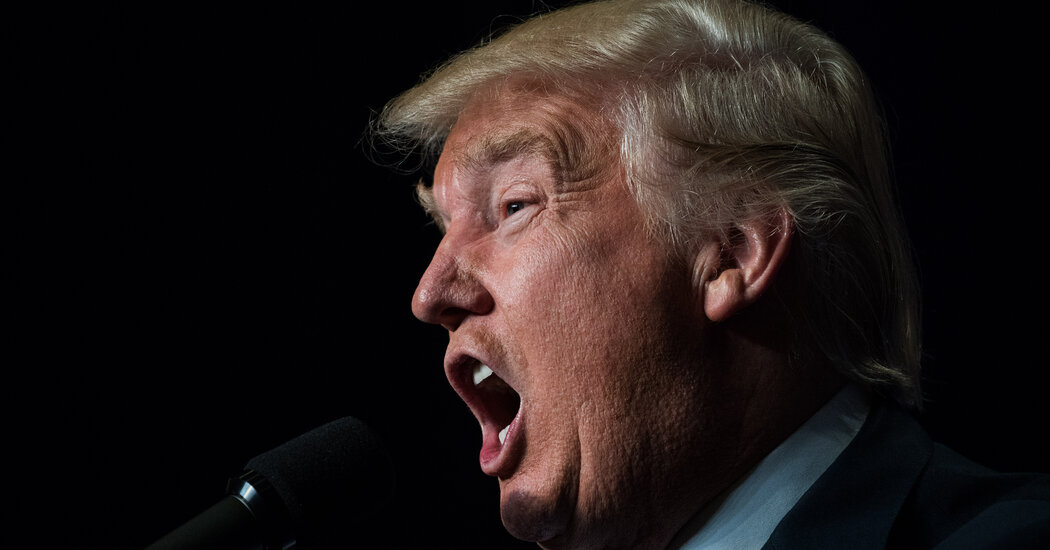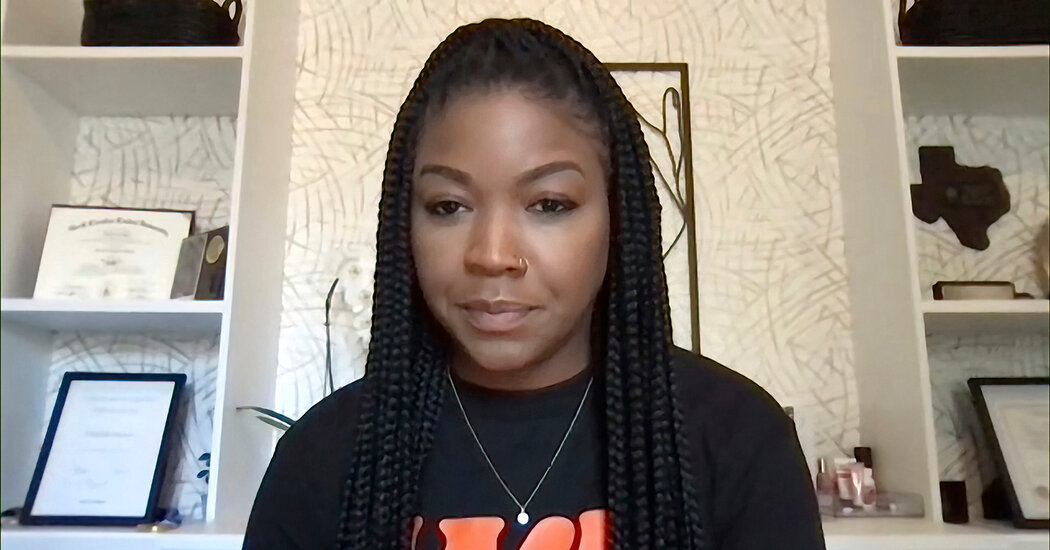[ad_1]
In the past week, the court:
- Ruled 6-to-3 in Carson v. Makin that Maine cannot exclude religious schools from a taxpayer-funded “tuitioning” program that pays for private school tuition when no nearby public high school is available. Three dissenting judges said this demolished the Establishment Clause interest in the separation of church and state. That decision built on a 2020 5-to-4 decision about a voucherlike program in Montana, where the court equated the state’s constitutional provision against public funding of religion to actual discrimination against religion. Justice Sonia Sotomayor wrote in dissent: “[I]n just a few years, the Court has upended constitutional doctrine, shifting from a rule that permits States to decline to fund religious organizations to one that requires States in many circumstances to subsidize religious indoctrination with taxpayer dollars.”
- Ruled 6-to-3 against a Washington state school board, in Kennedy v. Bremerton School District, that had disciplined a former football coach for leading postgame prayers at midfield with student-athletes and others. The decision was again blasted by the three dissenting judges, who said that the decision “elevates one individual’s interest in personal religious exercise, in the exact time and place of that individual’s choosing, over society’s interest in protecting the separation between church and state, eroding the protections for religious liberty for all.”
Whether the Supreme Court is done with school prayer is unclear. The 1962 Engel v. Vitale decision — a 6-to-1 ruling (two justices did not participate) — said school-sponsored prayer in public schools violated the establishment clause of the First Amendment. The Kennedy majority did not mention Engel (only the dissent did), and it did not say that schools could sponsor prayer inside schools — but some legal observers are now wondering whether it will further erode the separation of church and state when it comes to the issue.
Derek Black, a professor of constitutional law at the University of South Carolina’s School of Law, said in an email: “Holding that a school employee had a right to lead a prayer at school against the wishes and policy of an administration attempting to avoid violations of the Establishment Clause offers even more reason to infer that the current court may be open to allowing schools to facilitate group-led prayers in ways previously held to be unconstitutional.”
The Kennedy decision sparked derision by critics who say the six justices in the majority — five of them Catholic and one an Episcopalian — have now opened the door for prayers from other religions. Someone who goes by The Modest Teacher wrote on Twitter: “I can’t wait for the first Muslim football coach to take out his prayer rug and lead a team prayer after the game on the 50-year line.”
Critics also noted that Justice Neil M. Gorsuch, who wrote the majority opinion, ignored the facts in the case, writing only that the coach, Joseph Kennedy, had “offered his prayers quietly while his students were otherwise occupied” — when in fact he prayed along with athletes from his team and the opposing team as well as some members of the public.
The U.S. Court of Appeals for the 9th Circuit, which had ruled in favor of the school district that disciplined him, had found that Kennedy’s claim that he prayed silently alone on the football field was incorrect, given that he had announced his intention to do so beforehand — and his prayers were audible to others. (You can read a detailed analysis of the opinion from veteran educator Peter Greene on his blog, Curmudgucation.)
Public money paying for religious education
In the Maine case, it turns out that the two religious schools that sued Maine over the state’s refusal to include them in a publicly funded tuition program for private schools may still not be able to get money from that program, according to the state attorney general. Last year, Maine legislators amended the state’s anti-discrimination law to forbid discrimination based on gender identity and sexual orientation — and it applies to all private schools that accept public funds. The two schools have said they would not take state funding if they have to change their admissions standards and admit LGBTQ students or students with gay parents or hire teachers that were not Christian.
It is conceivable that the Supreme Court will take a case on whether states must include in publicly funded tuition programs religious schools with discriminatory admissions and hiring policies. Along those lines, Carson v. Makin raised the issue of whether the public would have to fund religious charter schools. Charters are publicly funded but privately operated. (You can read a full discussion of this here.)
“This case throws fuel on the fire of those arguing that states must allow churches to operate public charter schools and teach religion as truth inside of them,” Black said.
Education law scholar Kevin G. Welner also wrote a policy memo explaining that the court seems primed to revisit a case called Employment Division v. Smith, which allowed the government to enforce laws that indirectly infringe on religious practices. The Smith case upheld the enforcement of criminal drug-use laws against worshipers who ingested peyote for sacramental uses.
As applied to schools, consider again Maine’s anti-discrimination law forbidding discrimination based on gender identity and sexual orientation. The current Supreme Court might entertain a challenge by church-run private schools that claim enforcement of such anti-discrimination laws substantially (and unconstitutionally) infringes on their Free Exercise rights. If courts agreed with this argument, it would essentially exempt these church-run schools from the anti-discrimination laws and allow them to, for example, deny admission to gay students or students with same-sex parents.
Meanwhile, in May, a federal court ruled that a Kansas teacher could not be required to use a transgender student’s “preferred name” in class while using the child’s legal name when speaking to their parents. In Ricard v. USD 475 Geary County Schools School Board Members, a teacher sued her school district, saying the district’s name policy violated her religious beliefs because it forced her to lie. When she refused to address a student by the child’s preferred name, she was reprimanded and suspended.
This issue could come before the Supreme Court. As could a federal lawsuit in Michigan, Hile v. Michigan, which contests the state’s prohibition on public funding for all private schools.
Evolution and creationism
Welner, who is co-author of textbooks used in law schools and schools of education, pointed out another key education precedent that may be on the chopping block. In 1987, the Supreme Court in Edwards v. Aguillard struck down (7-to-2) a Louisiana law that required schools to teach “creation science” whenever it taught about evolution.
The court applied the “purpose prong” of the “Lemon test,” designating the law as a violation of the Establishment Clause because it lacked a secular purpose. The court wrote that “we agree with the Court of Appeals’ conclusion that the Act does not serve to protect academic freedom, but has the distinctly different purpose of discrediting ‘evolution by counterbalancing its teaching at every turn with the teaching of creationism. ’”
Welner said the Kennedy decision overruled Lemon — a point noted in the dissent by Sotomayor — and set forth a new “history and tradition” test. The current court’s analysis of a creationism law like the one in 1980s Louisiana would probably, he warned, play out very differently.
According to Welner, elements of the Lemon test that were in force before the court’s ruling Monday were long established and largely unquestioned: that the purpose and effects of a law should be carefully considered by a court considering whether it violates the Establishment Clause. The Lemon test was appropriate for the court in Kennedy to discuss, he said, because the school district had argued that the main reason for taking disciplinary action against the coach was to avoid violating the Establishment Clause.
Public education for noncitizens
Another issue that could come before the current court is the 1982 Supreme Court decision in Plyler v. Doe, which struck down a Texas law that denied state education funding to noncitizens. The high court concluded that the statute violated the Equal Protection Clause of the 14th Amendment and that a state cannot prevent children of undocumented immigrants from attending public school unless there is “some substantial state interest” in doing so. The dissent criticized the majority for overstepping its authority and legislating from the bench: The “importance of a governmental service does not elevate it to the status of a ‘fundamental right’ for purposes of equal protection analysis.”
In May, Texas Gov. Greg Abbott (R) said he wants the case revisited — and wants the federal government to pay for the public education of undocumented students in Texas schools.
Black said: “Unfortunately, Plyler has long been subject to critique on the notion that it lacks a logical doctrinal foundation. The court in Plyler was not as clear as it should have been in articulating the basis for its heightened analysis, and that heightened scrutiny in an education case has remained largely confined to Plyler, making it a unique case. … While it would be a gross error to reverse Plyler, it remains a case that more conservative thinkers target as lacking a logical doctrinal basis.”
The most important Supreme Court case involving education was the 1954 ruling in Brown v. Board of Education of Topeka, which said segregated schools were unconstitutional. The decision, which prohibited Southern states from segregating schools by race, eliminated the “separate but equal” rule established in the 1896 Plessy v. Ferguson case, which allowed states and school districts to designate some schools as “Whites-only” and others “Negroes-only.”
Brown v. Board of Education also helped focus the country on institutional racism and the subjugation of Black Americans, and it was followed by a civil rights movement that led to important legislation — some of which the Supreme Court has eroded in recent years. But as a vehicle forcing school integration, Brown has failed. After a period of federally mandated school desegregation plans in numerous districts, school segregation remains commonplace in America. Legal experts say it is unlikely the court would revisit this issue.
“There is nothing in Brown to cut back at this point,” Black said. “Only a very small fraction of the original desegregation cases remain open, and an even smaller fraction remain active. The only way to secure an integration remedy today is to prove a new recent instance of intentional discrimination.”
In 2016, the court by a single vote upheld the University of Texas at Austin’s admissions policy that included racial diversity as a positive consideration in decision-making, after a White student who had not been admitted sued, claiming that she was discriminated against because she was White. Justice Samuel Alito issued a scathing dissent in which he said, “This is affirmative action gone berserk.” It was one in a series of decisions over the past 45 years in which the Supreme Court had upheld affirmative action, which permits schools to use race in admissions decisions and is seen as promoting diversity on college campuses.
That was the last time the court ruled on a case involving race-conscious affirmative action, which has been used by schools — and contested in court — for more than 40 years. Now Alito is in the majority on the Supreme Court, and the majority is expected by many legal scholars to finally end race-based affirmative action. The court this year accepted two cases on college admissions and will probably hear them in its next term, which starts Oct. 1.
One case accuses Harvard University of discriminating against Asian American applicants by using subjective ratings of personal qualities — such as leadership, courage and compassion — as part of the admissions process and not doing it strictly on academic performance. This, the plaintiffs claim, discriminates against Asian Americans, something Harvard officials denied.
The case against the University of North Carolina accuses the school of giving preference to Black, Hispanic and Native American applicants over Whites and Asian Americans. University officials have said their admissions process, which takes race into account to achieve diversity, is legal.
In 1996, the Supreme Court, in United States v. Virginia, voted 7-to-1 to strike down the long-standing male-only admission policy of the Virginia Military Institute (VMI), which boasted of being Virginia’s only exclusively male public undergraduate institution of higher learning. Justice Clarence Thomas recused himself because his son was enrolled at VMI at that time.
The late Justice Ruth Bader Ginsburg wrote for the majority that VMI had violated the 14th Amendment’s Equal Protection Clause and did not show an “exceedingly persuasive justification” (the court’s long-standing requirement for sex-based classifications) for its sex-based admissions policy, violating the 14th Amendment’s Equal Protection Clause.
While there are no current efforts to reverse that decision, Black said the mind-set of the current Supreme Court opens the possibility that it would entertain one if it presented itself.
The dissenter in VMI claimed that the ruling reversed a tradition “that was well accepted at the time of the 14th Amendment’s adoption,” Black said.
“In other words,” he said, “they claimed that there was no way single-sex education was unconstitutional given its prevalence during the 19th century. Recent cases have made history — rather than precedent or standard levels of scrutiny — the relevant barometer for constitutionality.
“The entire decision in Dobbs, for instance, purports to turn on what was or was not allowed and prohibited regarding abortion. And the day before Dobbs in New York State Rifle & Pistol Assn, Inc. v. Bruen, the court effectively threw out all normal judicial standards for judging violations of the right to bear arms and held that the only gun regulation that would be permitted is that which is analogous to gun regulation that was in existence at the time the 2nd and 14th Amendments were ratified.
“While it seems far-fetched and illogical to say the Constitution’s explicit prohibition against ‘deny[ing] to any person … the equal protection of the laws’ does not extend to guarantee women the right to receive the same educational opportunities as men, the current court’s willingness to elevate historical practices (even when those practices are based on bias and discrimination) places such obvious principles at risk,” Black said.
While it true that Title IX — federal civil rights law that prohibits sex-based discrimination in any school or any other education program that receives federal funding — is now in place, he said it is riddled with exceptions, including for schools that have historically operated single-sex programs, and those exceptions make it far more lax on a variety of issues than the Constitution.
“So yes,” Black said, “it is an important backstop on a lot of issues and has some special protections, but also special exceptions.” The facts of a specific case would determine whether someone would proceed under Title IX or the Constitution, he said, but on federally funded single-sex education, “the Constitution is stronger and this court could erode that if it used reasoning similar to recent cases.”
[ad_2]
Source link




